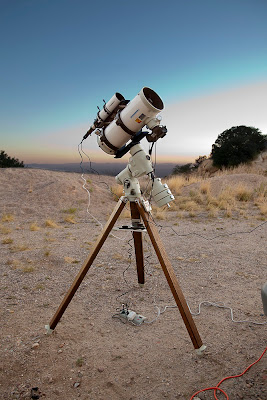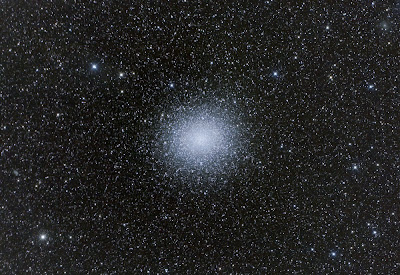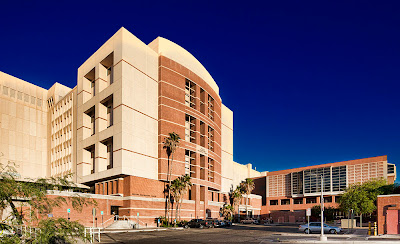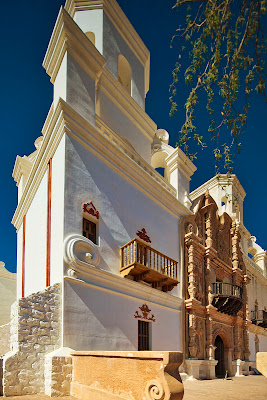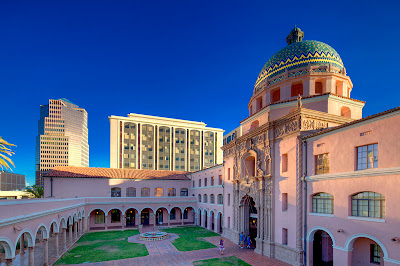My first target was Omega Centauri (NGC 5139) - a BIG beautiful globular Cluster. A challenge from my latitude as it never gets higher than 10 degrees off the horizon. I managed to get 2.1 hours of data on the bugger though.
Lastly, M20 and M8 - both in the field of the Takahshi E160 and the 5DII camera body but also never very high off the horizon. I was not happy with the results from my "one-shot" color system. The IR blocking filter and the bayer mask made the H2 regions look very blue and washed out. Sigh, I guess its time to consider something with a little more efficiency and red sensitivity.
Below are images of the observing site and my equipment as well as the final products for the evenings effort. Click on the images for a larger view.

